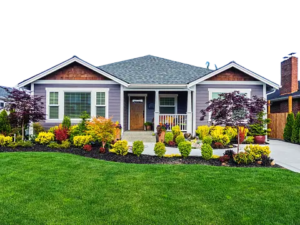Corporate architecture is no longer the traditional stuff and sterile style that we’re so used to seeing. With millennials joining the workforce and often running it too, office buildings are becoming cooler, more fun, and smart. Companies are trying to encourage a relaxed atmosphere that’s inviting, exciting, and intelligent. Perks like spas, rock climbing walls, slides, lounges, and golf rooms are all part of this modern office space. With the addition of technology, these spaces are also becoming more user-friendly and more efficiently run. Here are 7 ways smart components are transforming today’s office buildings.
Air Conditioning
HVAC or heating, ventilation and air conditioning systems are now being optimized to decrease wastage. Using advanced software, these units are being controlled when it comes to water flows, pump speeds, and fan speeds, all while maintaining a set temperature. Traditional buildings use manual temperature control for heating and cooling, which can account for one-third of a building’s entire water consumption. The network-based HVAC system automatically calculates the best methods to heat, cool, and ventilate a building taking into consideration factors such as the time of day, season, and area of space. In office spaces where this technology has been implemented, huge water savings have already been seen.
Security
Enhancements in security are also going down the tech route. With tons of people coming and going through office buildings, incorporating a smart system to keep track of this is wise. Smart buildings today also use network-based systems to maintain their overall security. One example of a way this is being incorporated is through a visitor management service that allows businesses to use their email to approve visitors. With a visitor registration of contacts already present in your email client, all the visitor has to do is use the barcode that was emailed to them to gain access to the building. This system is fast, user-friendly and secure. Additionally, companies are providing offices with wireless intrusion detection systems that can be monitored and controlled remotely, from a mobile device.
Automated Window Blinds
Smart offices are taking advantage of technology in all aspects, and this includes automated window coverings. Sleek, easy to maintain, and providing full privacy, motorized blinds are popular in today’s offices. Many are made from eco-friendly materials and can be used for windows looking outside, as well as for glass meeting rooms and offices when privacy is required. Cordless for a clean look, these shades can be integrated into a smart system, where they can be controlled from a remote, your phone, or your network.
Solar Panels – Self-Powering
Solar panels are becoming the preferred way to go when it comes to energy. With moves towards greener sources, smart office buildings are incorporating rooftop solar panels for their energy. Panels can be installed quite easily, making the building off the grid, or self-powered. Without reliance on pricey electricity, these buildings become their own self-sustaining ecosystems, saving on both energy bills and costs, as well as protecting the earth.
Smarter Sensors
Sensor-based technology is not new in the corporate world. With buildings all over the world already using this technology for energy conservation – automatic lights, for example – there is newer technology present. Sensors that are even smarter than the existing ones will know how the office space is being utilized at every single moment of the day. It will know how many people are in the rooms, how long the line is in the cafeteria, where there are free desks available, how many people are in the hallways, etc. This information will help building management to cut down on costs, and use energy in a more efficient way. Rather than using the cloud or a central server, these smart sensors will be able to analyze data and information within the sensor unit itself.
Elevator Monitoring
Elevator traffic jams and congestion can be drastically impacted with smart elevator monitoring technology. Cloud-connected services can improve ride efficiency, alert building maintenance about potential problems or impending breakdowns before they occur, and anticipate rush hour surges. Key card connectivity can also automatically transport riders to their floor as soon as they scan their card, rather than having to indicate a floor themselves. This is not only helpful when it comes to efficiency and ease of use, but it also reduces energy consumption, as efficient usage, smarter pathways for stops, and repair maintenance can all be better monitored with smart integration.
Smart Lighting
While smart lighting can go hand in hand with smart sensors, as they are often used for this purpose, smart lighting goes beyond that. Fluorescent lighting is being replaced with energy-saving LED lighting, which is then integrated with smart sensory systems. These systems are enabled by scalable wireless networks, which monitor dynamics such as real-time occupancy, light levels, temperature in the room, and overall energy usage.
The future is closer than we think, and smart components in the corporate world is showing us just how close. With a general move towards efficiency, speed, and ease of use, these 7 aspects of technology are transforming today’s office buildings.






Leave a Reply
You must be logged in to post a comment.